We’ve had a really successful A Level results day at Arbor. Whilst our schools have been busy crunching their own data, we’ve been looking at the national picture for A Levels.
As schools continue on the road to recovery after COVID, we wanted to compare the 2023 data to this year’s results to see if the pandemic has had an effect on student’s attainment in certain subjects.
With the recent election of a new Labour government, we were also interested in looking at the take-up of more ‘traditional’ subjects like Mathematics and English. Subjects that the previous government had placed a focus on, compared to more creative subjects such as Music and Art.
Looking at the data, core subjects like English and Mathematics have a much higher take up of entries. Subjects such as Psychology, Business Studies, and Art and Design (that are often studied for the first time by students at A Level) have declined.
Surprisingly – Biology, Chemistry and History entries have declined, even though these are often seen as more ‘traditional’ subjects. This could be due to the increase in Mathematics and English, or the teacher shortage in these subjects.
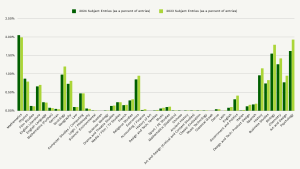
–
Mathematics
Mathematics A Level has seen an increase in the number of entries this year. This is a surprise as the lack of Maths teachers nationally has been well documented. Is it because students are seeing Mathematics as a more lucrative subject in later life? Or perhaps because of the focus on numeracy at an earlier age?
Grade Distribution
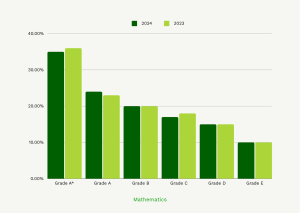
Number of Entries
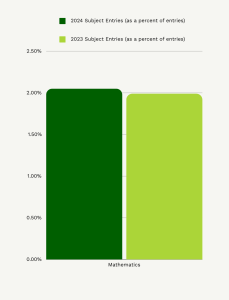
–
English Language
The number of entries for both English Literature and English Language have increased this year. Potentially at the expense of other academic subjects that require a high level of literacy, such as History. This may be a result of the previous government’s focus on Numeracy and Literacy filtering through to A Levels.
Grade Distribution
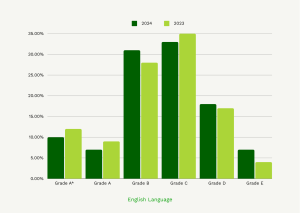
Number of Entries
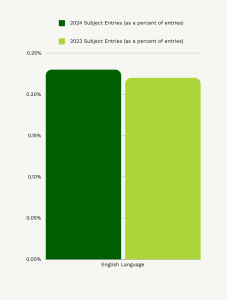
English Literature
Grade Distribution
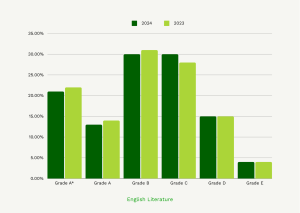
Number of Entries

Computing
The number of students entered for Computing A Level has increased – perhaps because of the AI revolution?
Grade Distribution
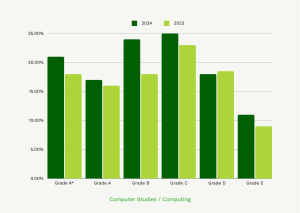
Number of Entries
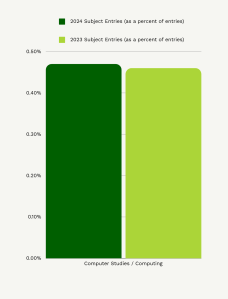
Physics
Physics entries are also on the up. Is Space X and Tesla making Physics fashionable?
Grade Distribution
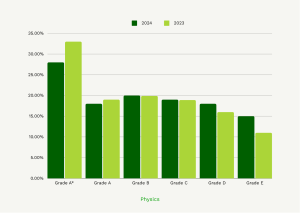
Number of Entries
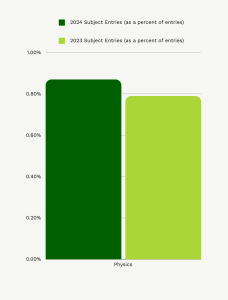
Music
Music entries are down this year. It could indicate a shift in young people’s interests, or, a reaction to the narrowing of the curriculum.
Grade Distribution
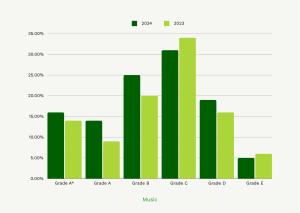
Number of Entries

Art and Design
It’s the same for Art and Design. Entries appear to have suffered in favour of subjects seen as more traditionally ‘academic’.
Grade Distribution
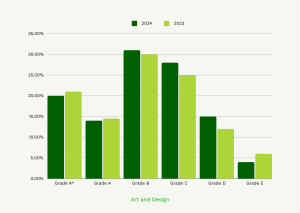
Number of Entries
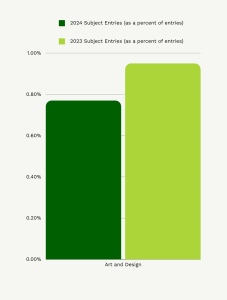
According to the preliminary data, it looks like Physics and Computing are the big winners, with more creative subjects such as Music and Art suffering from less entries.
These trends could be a result of the growing popularity of AI and space travel, or they could be the effects of the narrowing of the curriculum at Key Stage 4.
Methodology
- To compile this data, we’ve taken average grades and entry counts across a number of exam boards and qualifications and used the award’s “Subject” key to aggregate.
- In some cases, we are missing the actual results for subjects. These are counted as ‘null’ results values, but will be counted as an entry.
- ‘X’ and ‘U’ grades are not displayed on our charts.
- In all cases, we’ve used A Level data and not BTEC data.
- This is an early snapshot of the data and may change. We plan to review this data in the near future.
We take our insights from Arbor’s Data Warehouse, powered by Snowflake, which contains the anonymised data of schools in the Arbor community. As of today there are 6,707 English schools using Arbor, supporting over 2.5 million students. This data set represents 27.4% of the 24,453 schools in England. Our data includes 896 secondaries (26% of the 3,452 secondary schools in England), and 5,345 primaries (30.3% of the 16,764 primary schools in England). Arbor national averages track closely to DfE national averages.
–
About Arbor
At Arbor, we’re on a mission to transform the way schools work for the better, with brilliant, intuitive tools designed to make a difference.
We’re the UK’s most popular cloud-based MIS, and are used by over 6,000 schools and 400 MATs to work more collaboratively, free staff from unnecessary admin and make a measurable improvement to the way they work each day.
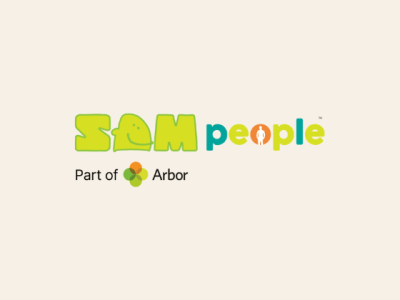



Leave a Reply